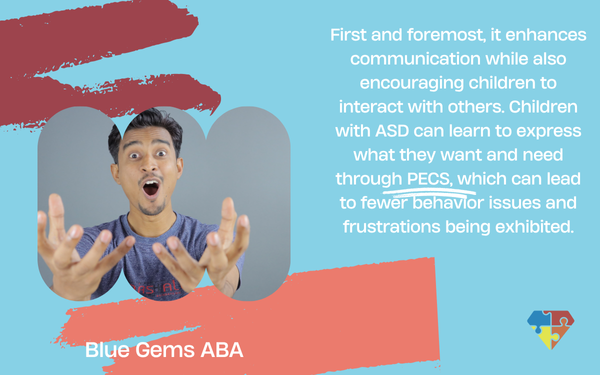What is PECS?
Every child who has autism spectrum disorder (ASD) is unique.
Some children have milder forms of autism and require basic support to help them build communication and social interaction skills. Other children have much more severe forms and could require intensive support to help them modify negative and/or harmful behaviors that they exhibit.
Most children with autism face deficits in communication skills, though how this exhibits itself differs from one child to the next. In the most extreme cases, children with ASD may be completely non-verbal.
Teaching these children how to communicate may be more challenging but equally as necessary as building communication skills in children who can speak.
Applied behavior analysis, or ABA therapy, treats children on the autism spectrum who possess many different skills and abilities. To help support non-verbal children, ABA therapists often use a tool commonly called PECS, or the Picture Exchange Communication System.
In this article, we’ll describe what PECS is and how it works.
Table Of Contents
What is PECS?
PECS was first developed back in 1985 as a way to facilitate communication using visual aids rather than words. It was designed to empower children who were non-verbal to express how they were feeling and what they need or want without having to speak words.
PECS has proven to be extremely effective at doing just that, which not only helps children improve how they’re able to interact with other people but also results in the significantly enhanced ability to function and learn.
Instead of using words, PECS teaches children how they can exchange pictures of items they want with someone they are trying to communicate with. It’s a rather simple approach, but one that has proven to work as a solid foundation on which to build other vital skills.
| Phase | Name/Focus | Description |
|---|---|---|
| 1 | Basic Exchange | Child gives a picture of a desired item and receives that item in return. |
| 2 | Generalization | Skills are practiced with different people and in different places to reinforce persistence and adaptability. |
| 3 | Choice Making | Child is presented with multiple pictures to choose from, promoting decision-making skills. |
| 4 | Sentence Building | Introduces “I want” card followed by a picture of the desired item to form basic sentences. |
| 5 | Responding | Child learns to answer questions like “What do you want?” using picture responses. |
| 6 | Expanded Language | Child answers broader questions such as “What is it?” and “What do you hear?” |
What Are the PECS Phases?
PECS is carried out in six phases that are progressive in nature. In other words, children learn and master the first phase before moving onto the next one.
Each time they move to a new phase, they are learning a more complex communication form.
The first phase is learning the basics of communication. They’ll learn how to exchange a picture of an activity or item that they want with someone else, and then get that activity or item in return when they successfully do it.
The second phrase expands this practice to different people and places. It requires children to generalize the skills they learned initially and be persistent in mastering them.
Phase three involves giving the children a selection of at least two pictures of things they may want. This gives them a choice and encourages them to make decisions on their own.
In phase four, words are integrated through the use of a picture that has the words “I want” written on it. The goal is to have children present that picture first followed by a second picture of the thing they want. This helps them to form simple sentences, even if they aren’t verbalizing the words.
Phase five takes this a step further and teaches them how to answer when someone asks, “What do you want?”
The final phase expands on this response so they can answer other questions, such as “What is it?” or “What do you hear?”
How Does PECS Benefit Children in ABA Therapy?
PECS is an extremely effective tool that ABA therapists can use to teach a number of different skills.
First and foremost, it enhances communication while also encouraging children to interact with others. Children with ASD can learn to express what they want and need through PECS, which can lead to fewer behavior issues and frustrations being exhibited.

It also encourages non-verbal children to interact with others and gives them the confidence to do so. This, then, builds on their general social skills, which makes it easier for them to integrate into various environments.
PECS can also teach non-verbal children with autism how to build other skills, and can serve as the foundation for learning in real-world environments such as at home for daily routines or even in a traditional classroom setting.
By improving communication and expression, PECS is also essentially helping children become more independent. That’s because it reduces how dependent they are on other people to interpret what it is they want and need, empowering them to initiate that instead.
Blue Gems ABA Uses PECS for Non-Verbal Children with ASD
PECS is a very effective way at teaching non-verbal children with ASD how to express what they want and need. It serves as a great tool that ABA therapists can use to build communication skills, which can lead to the mastery of many other skills as well.
At Blue Gems ABA, our experienced team of therapists integrates PECS for non-verbal children with autism, and many other strategies based on the specific and unique challenges, strengths and preferences of every child we serve. In this way, we’re able to help them live more independently.
To learn more, please contact us today.




